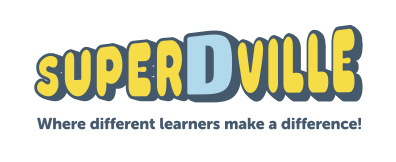Jennifer Reifsteck is a school and teacher program manager at the Smithsonian’s National Museum of Asian Art and has been a museum educator since 2003. Her article “The Art of Slowing Down” explores mindful education methods with a unique approach to intentional learning that benefits all children, including those who are neurodiverse.
Thandiwe: What led you to developing your curriculum based on the concept of slowing down?
Jennifer: I was first introduced to the term by the work of Shari Tishman, a researcher at Harvard’s Project Zero, and she introduced the term slow looking. It’s this concept of really taking your time to carefully observe more than what you can see at first glance. She’s coming to it from someone who’s interested in arts education, but it’s this concept that can really be applied across the curriculum and as a life skill. I was always a slow learner. I wasn’t picking up on concepts like my peers. I’m still that learner that really takes my time and needs the time to process and sort my thinking through this concept of slowing down. I was privileged to grow up with a big backyard and really spend my time slowing down in nature. I had parents who didn’t pressure me, so I was able to really relax and focus on art making and reading books and slowing down.
Thandiwe: Well, thank you so much for sharing that. When you spoke about your learning difference, that really resonated with me because that’s what SuperDville is all about- helping children who have learning differences feel supported. In fact, our social emotional learning curriculum is very art based but we don’t specifically emphasize the need to help children slow down. Do you see the slowing down concept as having a social emotional learning benefit?
Jennifer: Absolutely. A slow mind is a present mind and when you have more presence, you are able to really understand what’s going on inside. You’re able to understand what your emotions are and what your thoughts are and when you’re better able to understand your own thoughts and your emotions and regulate them, you’re better able to connect with others as well and to be a better listener to others. It all starts with slowing down and having that mindset to examine your thoughts, examine your emotions, and then being able to translate that skill and identify the emotions of others, which I think is really core to social emotional learning.

Thandiwe: I would imagine that you’ve encountered some kids with learning differences. I was curious if you had any thoughts from your own personal experience.
Jennifer: I infuse these slow learning activities not only with art, but also with K-12 students that I work with in yoga and qigong. It’s all about energy and meeting the child where they’re at. You have to match it sometimes, so if you find that a child is racing around and they have a lot of energy, we channel it and coordinate the movement with the breath.
Thandiwe: Do you have any experience where specifically working with kids with dyslexia?
Jennifer: As a museum educator, we have to respond in the moment to the learners we’re working with. Classroom teachers have a more personalized experience with their students and know their capabilities. We have to adapt to who’s in front of us, and that means providing a variety of activities. It’s implementing all these different tools in our toolbox of how you can have a conversation about works of art.
Thandiwe: I love that. It just shows how you have adapted and created a curriculum that is for all learners, so that any kind of learner will find what works for them. Given your experience and everything you do at the museum, what would you like to see happen in the classroom?
Jennifer: For teachers to instill a culture of curiosity in their classroom- a culture that is okay with mistakes. I’ve always been a learner that would take my time and wasn’t always at the level of my peers. I just remember in third grade, I was learning the times tables. I vividly remember the bulletin board in the back of the room where we had our names on our hot air balloons and our different level of abilities of knowing our times tables was pegged on the board. I could see all the other balloons above mine. I think just getting rid of that gamification competition atmosphere and getting into more project based work where kids can really demonstrate their curiosity and creativity with hands-on learning that’s not about memorization and being able to quickly go up to the board and solve a math equation in front of everybody in the room.
Thandiwe: You just described the kind of classroom any child with a learning difference would love to be part of. Is there any specific message you would like to leave for parents?
Jennifer: Kiddos want to please their parents. They want to be just like their peers, and they want to belong, and you can show them that there are many ways to feel love and nurtured and supported. Keep being your patient, loving selves and know that you’re doing the best that you can. We’re all doing the best that we can.
For tips on mindful learning, read Jennifers article “The Art of Slowing Down,”: https://www.smartbrief.com/original/the-art-of-slowing-down-how-to-help-students-truly-see-in-a-fast-paced-world
